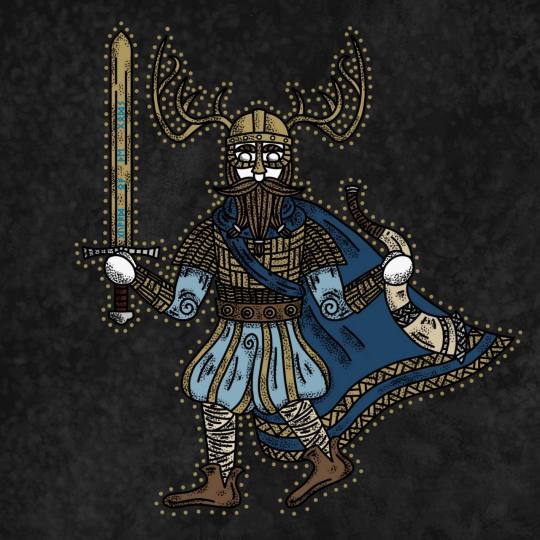#heimdallr
Text
Loki: Is anyone else a bit creeped out?
Freyja: So then leave. Out of everyone, your presence is the least necessary.
Freyja: Tyr's the leader. Freyr's got the food. Heimdallr's the navigator. I've got the magic for the spell.
Freyja: And Loki has no point.
Loki:
Thor, walking in front: What about me?
Freyja: You have a nice behind.
#LOL#loki#freyja#tyr#freyr#heimdallr#heimdall#thor#brotp#norse gods#norse mythology#incorrect norse gods#incorrect norse mythology#incorrect mythology#mythology#s: the vampire diaries (tv series)#queuetzalcoatl
114 notes
·
View notes
Text

#gow heimdall#heimdall gow#heimdall god of war#heimdallr#heimdall#god of war#god of war fanart#gow#pteroart#art
81 notes
·
View notes
Text

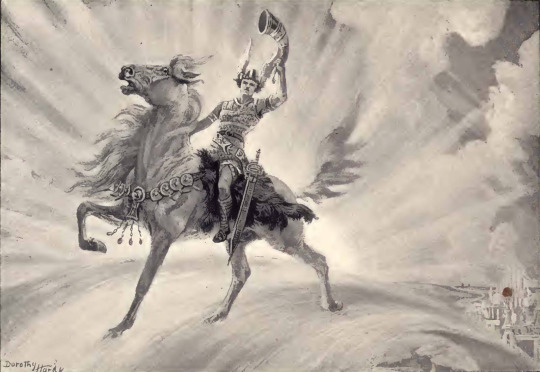
Heimdallr and Gulltoppr by Dorothy Hardy
#heimdallr#gulltoppr#art#dorothy hardy#heimdall#norse mythology#horse#horses#old norse#mythology#mythological#nordic#germanic#eddas#sagas#myths#norsemen#history#europe#european#scandinavia#scandinavian#northern europe#norse
112 notes
·
View notes
Text

Finished lining Heimdall. I'll colour him later on.
#lineart#linework#heimdall#heimdallr#heimdall norse mythology#norse mythology#norse myth#aesir#norse gods#norse deities#norse myths#digital
97 notes
·
View notes
Text

#Heimdall#Heimdallr#Gjallarhorn#Watchman of the Gods#norse gods#norse mythology#norse gods art#norse mythology art#Patronage#bifrost#Bifröst Rainbow Bridge#Himinbjörg
23 notes
·
View notes
Text
''My son is so poetic!''
Heigu be saying something deep and Heimdall is like: Omg my child is so smart and poetic! I have created a genuis :3

3 notes
·
View notes
Text

Heimdallr, my interpretation of him, I couldn’t think of anything for the background, but I’m really happy with how he turned out. The diamonds are bifrost fragments, that’s why they’re a rainbow :)
#my art#norse deities#norse mythology#heimdall#heimdallr#Heimdall Norse myth#norse pantheon#norse god#gods#mythology#my design
23 notes
·
View notes
Text
Cold Winter: Heimdall
HEIMDALL
Category: Norse mythology
Heimdall (or Heimdallr if you want to stick more to the original Old Norse spelling) is one of the most famous Norse gods, frequently popping up alongside other iconic Norse gods such as Odin, Tyr, Thor or Loki. But in truth… Heimdallr is a very mysterious figure full of enigmas and that we haven’t entirely deciphered yet. Let’s take a look, shall we? And as usual, we’ll take a look at the Eddas.
THE POETIC EDDA
We know from the first of the Eddas that Heimdall dwells in Himinbjörg, a well-built house where he joyfully drinks mead and “holds sway over men”. Heimdall is described as the “watchman of the gods” or the “warder of heaven” – a thing that Loki uses against him during the flyting of the gods, claiming that Heimdallr was condemned to a “hateful life” as the watchman of the gods, who will forever have a “muddy back”. Described as the brightest/whitest of all the Aesir, and clearly depicted in stories as living among them, he is yet said to own the gift of foresight “just like the Vanir”. And it is this gift of foresight that apparently led him to suggest the idea, when Thor’s hammer got stolen by a jötunn wanting Freyja in marriage, to disguise Thor AS Freyja… Yep, this whole thing was Heimdall’s idea.
When Odin consults an undead völva to obtain knowledge of the future, she describes to him Ragnarök and mentons that Heimdallr will play a role in it – it is said that when the “sons of Mim dance” and when Yggdrasil starts burning, Heimdall will raise his horn, Gjallarhorn, and blow it so loudly even the dead in Hel will quake in fear (Gjallarhorn seemingly meaning “the horn of Gjöll”, which is one of the underworld-rivers of Norse mythology). And then comes a strange passage of her prophecies where she says that Heimdall’s horn (or “hearing” depending on the translation) is hidden under Yggdrasil – and it seems to be linked to a pledge (or wager) made by Odin and to a mighty stream/muddy torrent/foamy river-fall, which itself is tied to the pledge of Odin… It is overall a very strange passage that confused many scholars. For some it simply means that the horn is hidden near the underworld river it bears the name of ; for others it means that Heimdall left his ear in one of the rivers under Yggdrasil the same way Odin sacrificed one of his eyes in Mimir’s well… And just as mysterious are actually the opening lines of the völva’s prophecy, when she asks for all “the holy races/sacred children”, born out of Heimdall’s sons both high and low/great and small, to be silent and listen to her. What are those “children-races” of Heimdall? Well… for some people it might be humanity.
For you see, there is a tale in the Poetic Edda called the “Rigsmal” about a god of the Aesir called Rigr (or Rig). Rig is an old, wise, mighty and strong god. As he was walking on a seashore, he came to the farm-hut owned by a couple known as Ai and Edda (Great-Grandfather and Great-Grandmother). They offered him shelter, and a meal of poor, rough food. That very night Rigr slept in the couple’s bed, right between the two, and then left in the morning. Nine months later Edda had a son, who was swarthy/dark-colored. He was named “Thraell” (thrall/serf/slave), and he grew up strong but ugly. He married Thir (slave girl/bondswoman) and they had twelve sons and nine daughters, all named after ugliness and swarthiness. From them came the lowest of humanity’s social class: the serfs. When Rigr later encountered a pleasant house inhabited by farmers/craftsmen, Afi and Amma (grandfather and grandmother), he repeated the process – except that they gave him a meal of good food, and their son born nine months later had a ruddy complexion. Named Karl (churl/freeman), he married Snör (“daughter-in-law”) and they had twelve sons and ten daughters, all named after neatness and good quality. From them came the free farmers, the craftsmen and the herdsmen. Rigr finally performed his strange sleeping-rite on a third couple: Fadir and Modir (Father and Mother) who lived in a mansion and offered the god a splendid and excellent meal. Their child was blond, bright white in color, and named Jarl (earl/noble). When Jarl was grown up enough to start handling weapons, hawks, hounds and horses Rigr returned and the claimed the boy as his son – he gave him his own name, Rig, made him his heir, taught him the secret of the runes and advised him to seek lordship. Jarl conquered eighteen wealthy regions, married Erna (“brisk”) daughter of Hersir (“lord”) and had twelve sons, all given noble names meaning “son” – and they were the ancestors of the warrior-nobility of the Old Norse.
Why am I telling you this tale? Because the prose introduction to this part of the Poetic Edda claims that Rigr is none other than Heimdall. Such an angle thus would explain the völva’s words earlier as designing Heimdall as the “ancestor of humanity”, and by extension there would be a whole poetic signification of Heimdall being “warden of both gods and men”. And it is all fine and good but… scholars have actually started to wonder if this prose introduction to the poem wasn’t an old misunderstanding. After all, the prose introduction itself presents this tale as being “old” and its very presence is here to explain to the modern readers that the previous generations who told the tale of “Rigr” really meant “Heimdall”. But… when one looks at the story, Rigr seems rather to be Odin. A god wandering on earth among men, taking on a different name and identity… a “builder of world” creating an entire society through his actions… a god who favors warriors and nobility, and who teaches RUNES out all things to a human! In fact, later in the story, the youngest son of Rigr, named Konr, is described as becoming an expert not just as rune-craft but also at other forms of magic, such as being able to understand the speech of birds, to quench fire or heal minds – which in turns, gives him the title of “Rigr”. All these powers are clearly those of Odin, who like Konr (who “inherits” is name) is a warrior-sorcerer. So… Did ancient people mixed the gods together? Was the tale wrongly attributed to Heimdall when it was Odin’s? Or… is it possible that the “original” Heimdall, Rigr, was somehow “absorbed” by Odin? It is a common theory among Norse scholars, that most of the Aesir gods either were aspects of Odin that separated themselves from him OR that instead Odin as a mythological figure built itself by absorbing the other gods of the pantheon… Anyway.
THE PROSE EDDA
The Poetic Edda leaves us with a strange deity. Between the divine and the human, the celestial and the chthonic, the Aesir and the Vanir, Heimdall is an ambiguous figure… What did the Prose Edda made out of him? How did it build Heimdall as a more “understandable” character?
Well, Heimdall is described in there as the “white As” (As as in, the singular of Aesir), a great and holy god with teeth of gold, also called “Hallinskidi”, “Vindhler” and “Gullintanni” and who was birthed by nine maidens, all sisters. Yep, all nine of them gave birth to him – they are his Nine Mothers. The dwelling of Heimdall, Himinbjörg, is said to be near Bifröst, the rainbow-bridge allowing entrance into Asgard, the domain of the gods. In fact, if he lives there it is because of his job as watchman of the gods: he guards the Bifröst bridge from the jötnar by sitting every day on its edge. It is said that Heimdall requires “less sleep than a bird”, that he can see through night as if it was bright day – and that over a hundred leagues. His hearing is also extraordinary as he can hear “the grass growing on earth, the wool growing on the sheep, and all things louder”. He owns Gjallarhorn, a horn that is so loud it is heard across all the Nine Worlds when blown. He has a horse named Gulltoppr, and it is said that the head is often referred to as “Heimdall’s sword”.
He is called “son of Odin”, “Loki’s enemy” and “recoverer of Freyja’s necklace”. Indeed, it is known that Heimdallr fought against Loki for Freyja’s legendary necklace, Brisingamen – the “famed rainbow defender, ready in wisdom” battled against “Farbauti’s sin-sly offspring” at Singasteinn, the “singing stone/chanting stone”… Oh, and did I mention they were both in the shape of seals? Unfortunately we don’t know more about this mythological event, merely talked about in references, so it is unclear how both of them turned into sea animals or how Freyja’s necklace ended up in such a strange situation.
What we know however is what will happen to him at Ragnarök: as the enemies of the gods will gather on the plain known as Vidrigr, Heimdall will blow into Gjallarhorn, which will awake all of the gods and prompt them to gather at an exceptional thing (a “thing” being an Old Norse judiciary and political gathering, a reunion of the entire community to take decisions impacting it). It said that when the gods will fight their enemies, Heimdall will have to face Loki and they will kill each-other – but Heimdall will raise his horn and blow it once more… when Yggdrasil, after the battle, will be devoured by the flames.
- - - - - -
And this is it. This is all we know about Heimdall – and people have been trying to solve the puzzle that he is for a VERY long time.
One element that has been put forward is Heimdall’s liminal nature. He is a guardian of border and frontiers, a watchman over a bridge – and if he is Rigr, he first manifests in the story on a sea-coast and then travel through roads. All are liminal places, and Heimdall is even the one who’s horn will announce the start of Ragnarök, THE biggest transitional event of all Norse mythology.
Another theory that has been put forward is that Heimdall is some sort of ram-god. Indeed, people have pointed out that several of the god’s alternate names, “Heimdali” and “Hallinskidi” both are used to designate ram and sheep ; this, added to an insistence in describing the god’s teeth (who are apparently made of gold), the fact he is said able to hear “the wool growing on the sheep”, and the link between head and sword were all used as proof of his ram connection (not only is the head said to be “Heimdall’s sword”, there are also talks in Prose Edda of a sword called “Vindhler’s helmet-filler”, which basically means “Heimdall’s head”… and the “sword” of a ram is his horns, that he bears on his head.
But one of the biggest mysteries of Heimdall is without a doubt his Nine Mothers. In the Poetic Edda, Heimdallr is described as the son of nine mothers who were all sisters, a claim taken back in the Prose Edda (which adds that the father was Odin). There is a certain poem that is often invoked as describing the true identity of Heimdall’s Nine Mothers – it is the “Völuspa hin skamma”, but note that if I did not include it in my main look at Heimdall it is because nowhere in this poem is Heimdall named in one way or another. The poem merely tells the birth of a “mighty god” from nine sisters, and how the boy-god grew up strong nourished by “the strength of the earth”, “the ice-cold sea” and the blood swine or boar. The Nine Mothers are here described as jötunn maidens who gave birth “at the edge of the world”, and each is given a name: Angeyja, Atla, Eistla, Eyrgjafa, Gjalp, Greip, Imdr, Jarnsaxa and Ulfrun. This entire description has notably led people to believe that the Nine Mothers of Heimdallr are actually the same as the “nine daughters” of Aegir and Ran, a duo of jötnar sea-gods who had birthed nine jötunn maidens personifying the waves (even though they are given different names than those listed above).
But this just muddles further the complex heritage of Heimdall… Descendant of jötnar, and yet counted among the Aesir, and yet said to have the powers of the Vanir… He basically bears the traits of all three divine groups of Norse mythology. And no, him being called a son of Odin doesn’t clarify anything because that’s done in the Prose Edda – and the Prose Edda turned basically all of the Aesir into sons of Odin. Just like Tyr – who went from the son of a jötunn in the Poetic to a son of Odin in the Prose.
24 notes
·
View notes
Text
I love this shitty little animation
Those first 3 sentences REALLY reminded me of his voice ♡
(made by me)
#heimdall#heimdallisabitchbutwelovehim#god of war#god of war ragnorak#heimdall ragnarok#heimdallr#simping hard
31 notes
·
View notes
Text
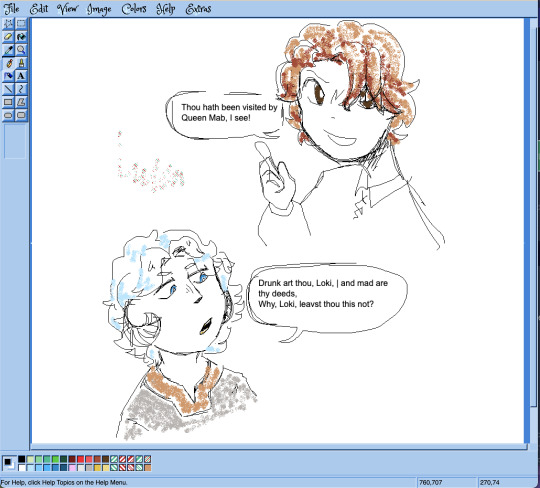
i am the most productive student in the whole world
#wow i drew myth!heimdall for once#heimdallr#mercutio#im not tagging this as much more these are really shitty doodles i did on my laptop instead of doing school work lol#fish.arts
5 notes
·
View notes
Text

Whoops👀 full there
73 notes
·
View notes
Text
she looks like she fell from heaven i am so in love with her
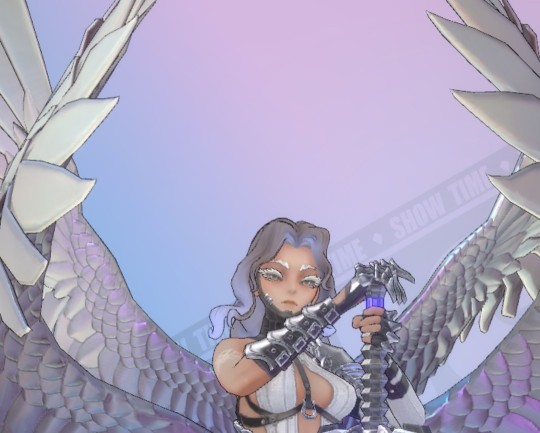
#lesbian#lgbtq#sapphic#cute#gaming#dislyte#dislyte ashley#norse mythology#heimdallr#afrodite thoughts
10 notes
·
View notes
Text
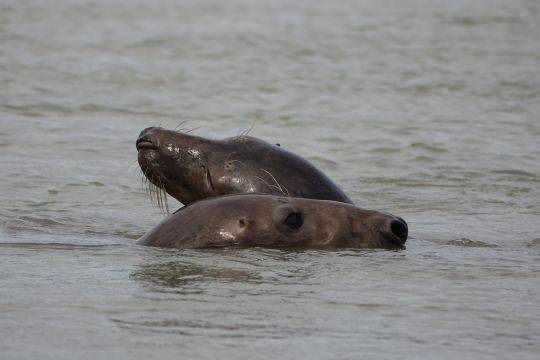
Grey seal by Adrien Stachowiak on Unsplash
2 notes
·
View notes
Text
thw best your favorite character can do is either be killed or kill somebody. that’s why I love Heimdall, he is killed and he does kill Loki.
4 notes
·
View notes
